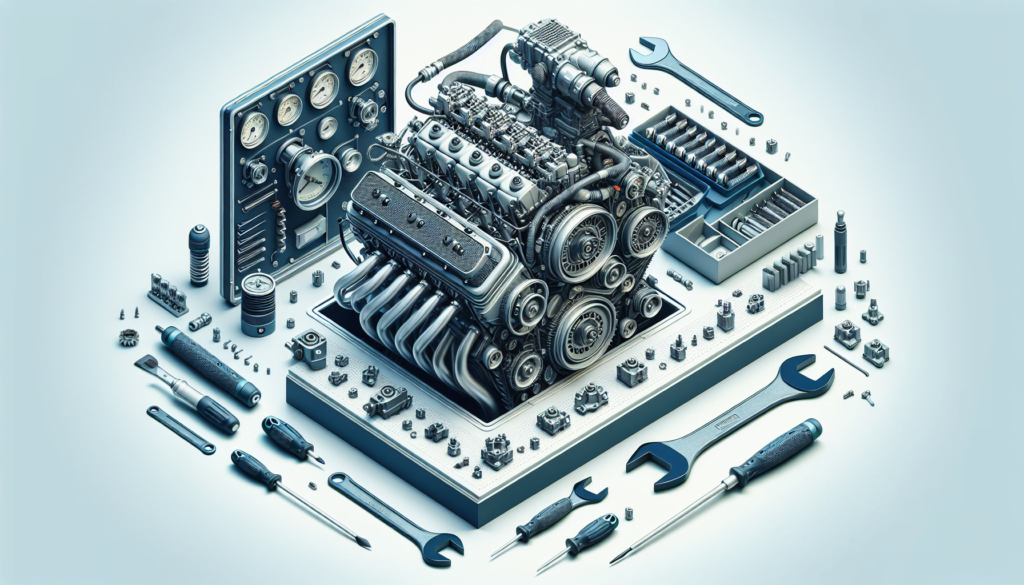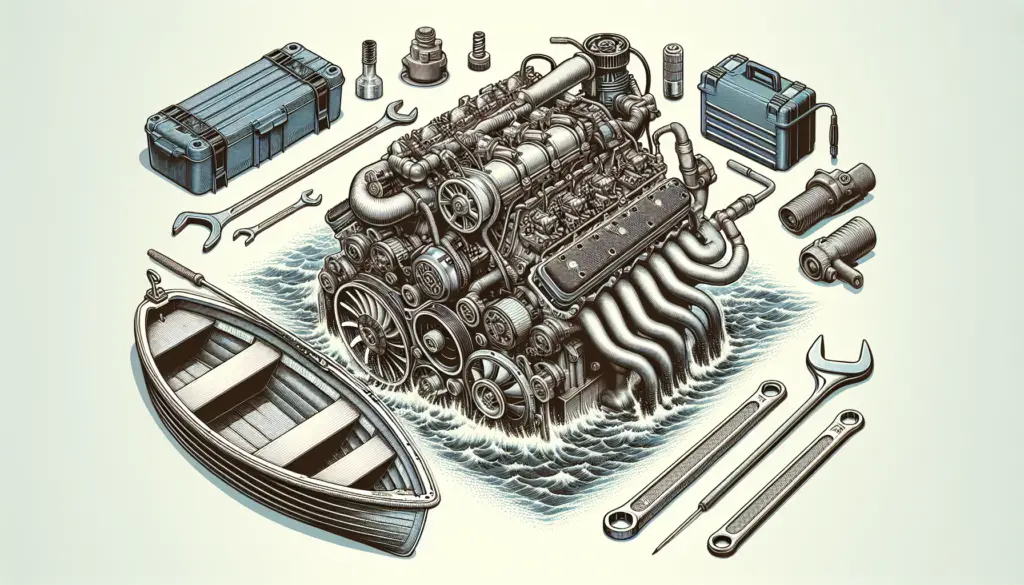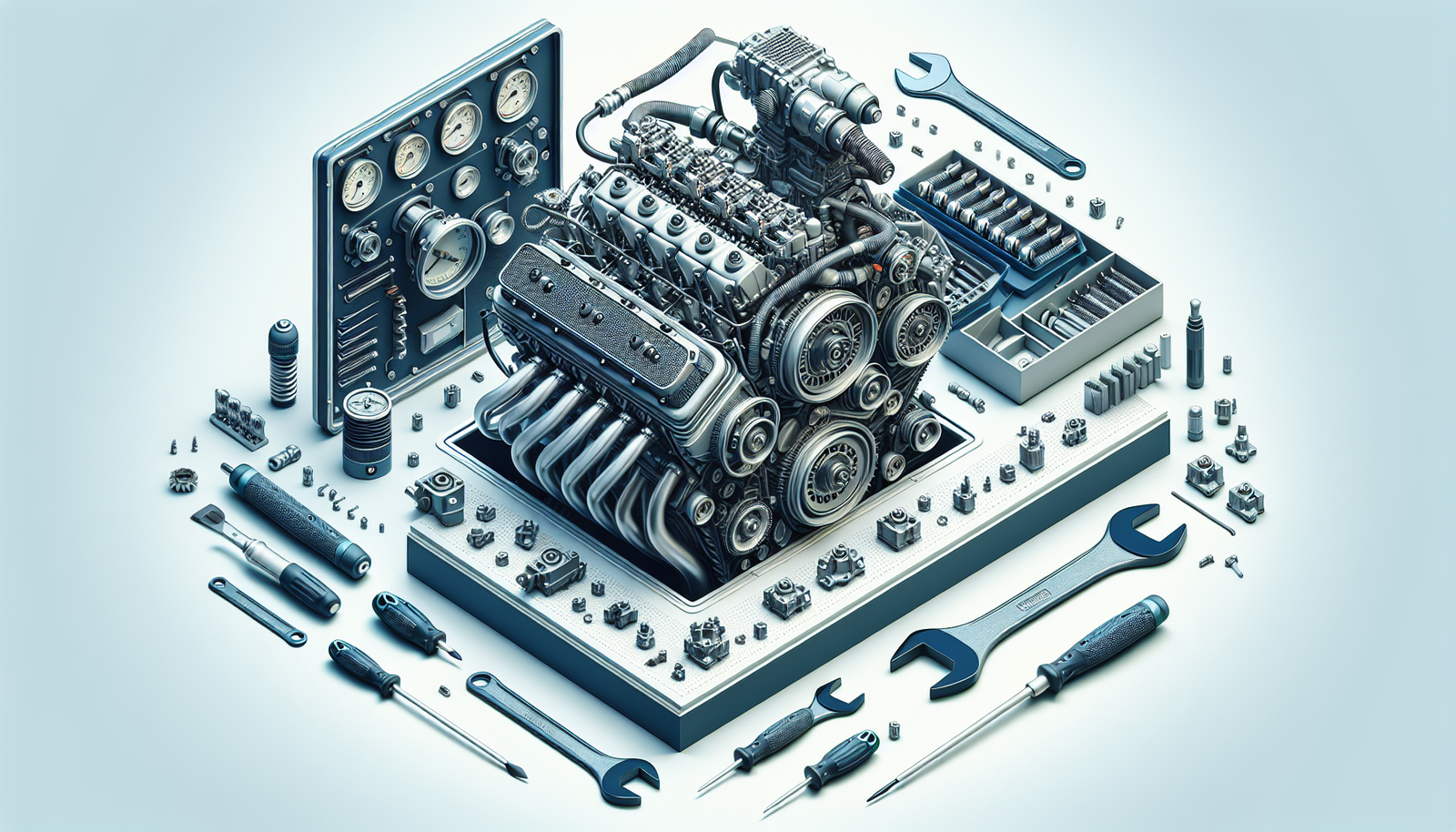Imagine yourself out on the open water, the sun warming your skin and the wind tussling your hair, when suddenly you notice the temperature gauge on your boat is skyrocketing. You’re about to explore “How To Diagnose And Repair Boat Engine Overheating,” a comprehensive guide that empowers you to identify, troubleshoot, and fix high temperature issues in your marine’s motor. Sharing a wealth of knowledge that derives from years of marine-technical experience and research, this article is a must-read for any boat owner aiming to maintain their vessel’s optimum performance and extend engine longevity.

Understanding Why Boat Engines Overheat
We’ve all dealt with overheating engines at some point, but what exactly causes them? There are many factors, but ultimately, it comes down to a lack of proper heat management. This can occur for several reasons, which we’ll explore in this section.
The Science Behind Engine Overheating
The overheating of your boat engine is a direct result of the imbalance between the heat being generated by the engine and its ability to dissipate that heat. An engine generates heat as a byproduct of its operation. Normally, this heat is managed, absorbed and dissipated by the cooling system which circulates coolant throughout the engine. However, if the system fails or the coolant isn’t adequately distributed, the engine may start to overheat.
How Boat Engines Differ from Car Engines
Boat engines differ in their structure, function, and in the fact that they operate in a different environment than car engines. One significant difference is the cooling system; most cars use a closed-loop system which consist of a radiator and coolant, but many boat engines use an open-loop system, which directly employs the colder, ambient sea water to cool the engine.
Common Causes of Marine Engine Overheating
There are several common causes of boat engine overheating. These can include a poor cooling system, lack of coolant, a failing water pump that doesn’t circulate coolant efficiently, a clogged heat exchanger, or malfunctioning exhaust system. Worn engine belts also play a role, as they can prevent the proper functioning of various engine components.
Learning the Symptoms of Overheating
Knowing the symptoms of an overheating engine is critical to stopping the problem before it causes serious damage. These signs can range from visual cues to changes in the engine’s performance.
Visible Engine Steam or Smoke
One of the most obvious signs is visible steam or smoke coming from the engine. This typically indicates that the coolant is boiling over or the engine is burning oil because of extreme heat.
Odd Engine Smells
Unusual smells may also indicate overheating. This could be a result of the coolant burning, plastic components melting, or engine oil being overheated.
Excessive Coolant Consumption
Your boat engine may be consuming more coolant than usual. If you notice that the coolant level drops significantly after running the engine, it can be a sign that the engine is overheating.
Reduced Engine Performance
An overheated engine usually does not run efficiently. If you notice a drop in your boat’s performance or speed, it could be a sign of overheating.
Erratic Temperature Gauge
An erratic or rising temperature gauge is one of the most straightforward signs your boat engine is overheating. Regularly keep an eye on the gauge when your engine is running.
Primary Checks for Overheating Boat Engine
If you suspect your engine is overheating, there are a few checks you can perform to help identify the issue.
Inspection of the Cooling System
Start by inspecting the cooling system. Check the hoses, seals, and overall system for any visible issues such as cracks, leaks, or blockages.
Checking the Coolant Level
The coolant plays a vital role in heat dissipation. Always make sure that the coolant level is at its correct mark. Not enough coolant can result in inefficient cooling and engine overheating.
Temperature Gauge Monitoring
Keep an eye on your temperature gauge. This simple yet effective tool will give you a clear idea about the performance of the engine and the cooling system.
Checking for Leaks in the System
Check for coolant leaks throughout the system. A leakage can cause the coolant level to drop, leading to inefficient cooling.

Tools Needed for Diagnosing and Repairing Overheating
Performing a comprehensive diagnosis requires certain tools.
Essential Diagnostic Tools
Basic tools include a multimeter, thermometer or infrared temperature gun to measure heat levels, and a pressure tester to check for leaks in the cooling system.
Necessary Repair Tools
For repairs, the tools required will depend upon the issue, but may include wrenches, screwdrivers, pliers, and hoses. A puncture repair kit might also come in handy for emergency situations.
Safety Equipment Requirements
Safety is important. Always have safety glasses, gloves, and sturdy footwear.
Recommended Tool Brands and Providers
There are numerous quality tool brands in the market. The choice of brand will generally depend on individual preference and budget.
Assessing the Water Pump and Thermostat
The water pump and thermostat play crucial roles in regulating the engine temperature.
Signs of a Failing Water Pump
A failing water pump may not circulate coolant effectively, leading to overheating. Signs can include leakage and a high-pitched whining noise coming from the pump.
Symptoms of a Stuck or Failing Thermostat
A failing thermostat may get stuck in the closed or open position, causing detrimental effects to the engine’s temperature control. Signs can include a continuously high or low temperature reading.
How to Check Water Pump and Thermostat
For the water pump, checking for leaks and any unusual noise can reveal issues. For the thermostat, testing it in a pot of boiling water to confirm if it opens and closes as it should is an effective method.
Methods for Replacing Water Pump and Thermostat
If these parts are faulty, you’ll need to replace them. This typically involves draining the coolant, removing the broken part, replacing it with a new one, refilling the coolant, and verifying normal operation.
Evaluating the Cooling System
The cooling system is the ultimate savior of your boat engine from overheating.
Importance of a Marine Engine Cooling System
Without a functional cooling system, the engine’s heat management will be highly compromised, eventually leading to overheating.
Components of the Cooling System
The cooling system comprises of the water pump, thermostat, heat exchanger, coolant, among other components. Each has a specific role to play in the heat management process.
Steps to Check the Cooler System Efficiency
Check the coolant level and quality, ensure the water pump and thermostat are functioning properly, and monitor the engine temperature during operation to evaluate the cooling system efficiency.
Repairing or Replacing Parts of the Cooling System
After identifying any faulty components, take measures to repair or replace them. It can be a direct replacement or might require comprehensive repairs, based on the severity of the damage.
Checking the Engine Belts
Engine belts are important as they ensure various engine components function as they should.
Role of Engine Belts
Belts drive the water pump, alternator, and other vital components. If a belt fails or slips, it may disrupt the normal functioning of these components and lead to overheating.
Analyzing Wear and Tear on Belts
Over time, belts can wear out and lose their efficiency. Regular inspection for cracks, tears, or slips can prevent unforeseen breakdowns.
Replacing Damaged Engine Belts
If a belt is visibly damaged or excessively loose, it should be replaced. Be sure to use a belt of the correct size and type for your particular engine.
Testing Belt Tension and Alignment
Even a properly installed belt can sometimes become misaligned or lose tension. Regular testing and adjustments can help maintain optimal performance.
Examining the Exhaust System
A boat’s exhaust system plays a pivotal role in managing engine temperature.
Function of the Boat Exhaust System
The exhaust system helps discharge excess heat and engine emissions. A malfunctioning exhaust can result in heat being trapped, thus causing overheating.
Signs of a Malfunctioning Exhaust System
An exhaust system malfunction can be identified through excessive engine noise, reduced performance, and visible leaks or corrosion in the exhaust components.
How to Check for Exhaust System Issues
Inspect the overall system for rust, breaks, leaks, and other damages. You can also check the color of the smoke – excessive black or white smoke can signal issues.
Repairing or Replacing Problematic Exhaust System Components
Depending on the issue, you might need to repair or replace damaged components. Always ensure the repairs are done right to prevent damaging other engine parts indirectly.
Testing the Engine Oil Quality
Engine oil plays a crucial role in heat dissipation.
Why Good Engine Oil Is Essential
Quality engine oil helps lubricate engine parts and manage heat. Poor quality oil or low oil levels can cause friction and excessive heat, leading to overheating.
Indications of Poor Quality or Insufficient Engine Oil
Signs of poor quality engine oil include a darker color, thick consistency, and metal particles. Insufficient oil can be confirmed by checking the level on the dipstick.
Steps to Check Engine Oil Quality
To check the oil quality, pull out the dipstick and closely observe the oil. Furthermore, if the oil pressure warning light is illuminated, you need to check the oil immediately.
Changing the Engine Oil if Necessary
If the oil is dark, thick, or contaminated, it’s time for an oil change. Also, always ensure that the oil level is within the correct range.
Professional Help for Boat Engine Overheating
Sometimes DIY may not cut, and you might need professional help.
When to Call a Professional
If the issue persists after conducting primary checks, or you’re not comfortable performing certain tests and repairs, it’s time to call a professional.
Finding a Reliable Marine Mechanic
Finding a good marine mechanic can sometimes be challenging. Always check for certifications, ask for recommendations, and read online reviews.
Average Cost for Professional Overheating Diagnosis and Repair
The cost of professional diagnosis and repair can vary widely based on the complexity and severity of the issue. However, investing in professional service can ultimately save you from costly damage.
What to Expect from Professional Service
Professional service usually includes thorough diagnosis, repair, and maintenance suggestions. They may also advise on ways to prevent future occurrences. You can expect to be updated on the progress and the associated costs. Transparency, open and honest communication are cornerstones of a reputable service provider.

